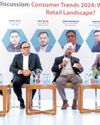DURING THE INITIAL YEARS OF UPA 1, India’s GDP growth soared. Between 2004 and 2008, the economy grew at an average annual rate of over 7.5 percent.

The aviation sector was a collateral beneficiary. Airlines like Jet Airways made full use of a booming economy. One airline though was about to face headwinds: Air India.
Praful Patel of the Nationalist Congress Party (NCP) was the minister of state (MoS) for civil aviation between 2004 and 2011. There was no Union minister of civil aviation. Patel was the boss. In 2006, I interviewed Patel at his residence in Mumbai which he would visit frequently though he was based in Delhi. Patel is an affable man. He spoke enthusiastically about Indian aviation and the great plans he had to make it world class.
It was around this time that privatization of India’s shambolic metropolitan airports began. Mumbai, Delhi, Hyderabad, and other cities soon had gleaming new modern airports run by private sector infrastructure companies like GVK and GMR with the Airports Authority of India (AAI) retaining a minority stake in a private-public-partnership (PPP) model.
Plans were also drawn up to merge Air India with domestic carrier Indian Airlines. The logic was superficially seductive: economies of scale, higher profitability, integration of engineering and pilot resources, and route rationalization. Not everyone was convinced that the AI-IA merger, approved by an empowered group of ministers in February 2007, was a good idea. But with India fast becoming a large aviation market, “route rationalization” took on a new meaning. Gulf-based carriers like Emirates and Qatar Airways were keen to increase flying rights from India to the Gulf. Over three million Indians live and work in the UAE alone. The India-UAE, India-Qatar and other Gulf routes were Air India’s bread and butter. Indian Airlines too had profitable flying rights on several Gulf routes.
Denne historien er fra April 13, 2019-utgaven av Businessworld.
Start din 7-dagers gratis prøveperiode på Magzter GOLD for å få tilgang til tusenvis av utvalgte premiumhistorier og 9000+ magasiner og aviser.
Allerede abonnent ? Logg på
Denne historien er fra April 13, 2019-utgaven av Businessworld.
Start din 7-dagers gratis prøveperiode på Magzter GOLD for å få tilgang til tusenvis av utvalgte premiumhistorier og 9000+ magasiner og aviser.
Allerede abonnent? Logg på

Technology, AI Driving Warehousing Sustainability
Anshul Singhal on how Welspun One is rapidly transforming Grade-A logistics and industrial parks across India, offering integrated fund development and asset management for large-scale warehousing solutions

DECODING RETAIL'S NEXT FRONTIER
As brands pivot towards omnichannel ecosystems and startups challenge legacy frameworks, the focus sharpens on experiential retail, sustainability and data-driven personalisation.

SORORITY OF WOMEN OF METTLE
Awinter afternoon in mid-December found quite a crowd at the Oxford Book Store on Connaught Place, as bibliophiles congregated at a corner to listen to three women authors, diverse in their passions, but drawn together by an urge to tell their story.

THE LEGACY OF THE AMARNATHS
IN NOVEMBER 2017 the management committee of the Delhi Cricket Association named the eastern stand of the Feroze Shah Kotla ground the Mohinder Amarnath stand.

PUTTING THE POWER IN THE POWERHOUSE
The Asus ExpertBook P5 is powered by an 8-core 8-thread Intel Core Ultra 7 Series 2 processor that clocks a maximum speed of 4.8 GHz, but it does not have hyperthreading. It is light weight, with a smooth glass touch pad. The laptop almost has all the I/O ports you could possibly need in a business laptop, making it an extremely lucrative option for professional computing, says

"We must be aware of our energy and water consumption"
BW Businessworld caught up with actor, philanthropist, and climate warrior BHUMI PEDNEKAR to chat about climate change and more.

"Cooking is a passport to the world"
In conversation with renowned CHEF MANJIT GILL, Advisor at Kikkoman India and President, Indian Federation of Culinary Associations (IFCA). As the former Corporate Chef of ITC hotels, Chef Gill has helped shape iconic restaurants, such as the Bukhara, Dum Pukht, and Dakshin. He has had the privilege of serving former American Presidents Barack Obama, Bill Clinton, George Bush, and the French, Canadian, British and German premiers. In 1992, Chef Gill had the opportunity of being invited to cook for Prince Charles and Lady Diana, at the Palace of the Maharaja of Jaipur. He was awarded the Lifetime Achievement Award from the Ministry of Tourism in 2007.

Strengthening Middle Management for Organisational Resilience
WHAT HOLDS AN organisation together in chaos? Is it visionary leadership, cuttingedge strategies, or robust technology?

The Retail Trailblazers
A look at companies that are making a positive impact on India's growing retail sector with their future fit business and marketing strategies.

Driving Conscious Consumerism
VIDIT JAIN, Co-founder of Kindlife, is leading the charge in revolutionising the intersection of technology and conscious consumerism.